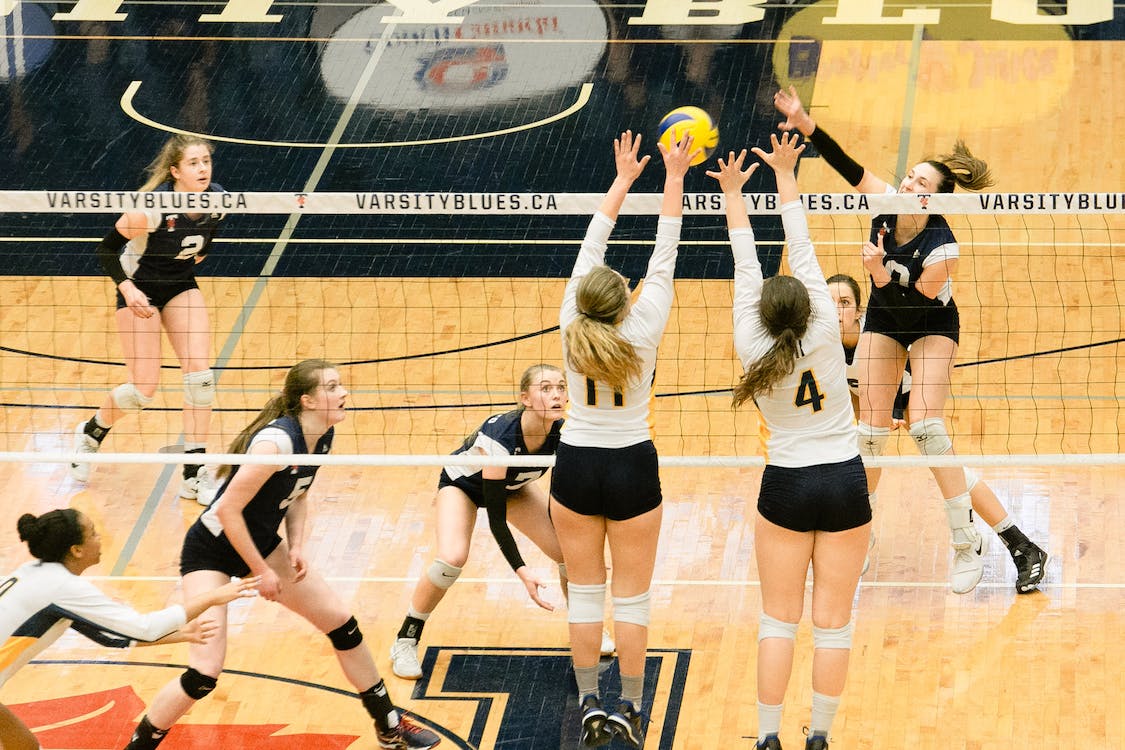
Drop-in volleyball is a fun sport, between fast-paced rallies, executing strategic plays, and setting up your teammates for some cool-looking offensive attacks, volleyball certainly is exciting. As fun as it may be, the technical side of volleyball is a crucial aspect of the overall enjoyment one has when playing, without having the necessary technical knowledge of the sport, players will be stuck executing the same plays on the same systems forever. This blog aims to explore and explain various volleyball rotations that you may come across at different levels of the game. From beginner-level rotations to more advanced systems, this blog will cover what you need to know at every level of the sport so that you can continue to rise through the ranks while having fun along the way.
1. The 6-6 System
The 6-6 system in volleyball is typically used at the beginner or recreational levels because of how easy it is to learn the various positions of the sport when using this system. Teams use a 6-6 rotation when everyone on the team can assume any position. Many times, 6-6 is used with younger, newer teams so that everyone can practice and perfect their best position.
2. The 4-2 System
For drop in games, especially for beginners, simplicity is key. The 4-2 system is an excellent starting point. As the name suggests, this system comprises four hitters and two setters. The simplicity lies in the fact that the setter is always in the front row, making rotation and positioning more straightforward.
The 4-2 system is great for a casual drop in volleyball game as it allows everyone to focus more on having fun and less on complex tactics. It's also beneficial for beginner players who are still learning the ropes of the sport, allowing them to focus on improving their basic skills rather than on intricate strategies.
3. The 6-2 System
The 6-2 system might sound similar to the 4-2 system, but it offers a dynamic twist. In this setup, you have six potential hitters and two setters. When a setter rotates to the front row, they become a hitter, and a player from the back row takes on the role of setting.
This system brings more flexibility and offence to the game. It's a popular choice in many recreational volleyball leagues, offering a fine balance of simplicity and strategic depth. The 6-2 system works well in drop in games with intermediate players, as it requires a fair understanding of rotation and player positioning.
4. The 5-1 System
The 5-1 system is a common setup in more competitive and professional volleyball but can also add an exciting challenge to drop in games. This system includes one setter and five hitters. The setter sets for all rotations, which means they set from both the front and back rows.
While this system can be more complex due to rotations and overlaps, it's an excellent choice for experienced players looking for a more strategic game. It might require more teamwork and communication, but when executed correctly, it can be incredibly satisfying and rewarding.
Remember, the best volleyball system for your drop in game largely depends on the skill level and preferences of the players. The idea is to keep the game enjoyable and engaging for everyone involved. Whether you're playing at a local beach, a park, or an indoor court, each of these systems can add a unique flavour to your recreational volleyball experience.
Mastering different volleyball systems not only improves your understanding of the sport but also makes you a versatile player who can adapt to different gameplay styles. So why not give these systems a try in your next drop in game? Who knows, you might discover a new favourite way to play this exhilarating sport. After all, in the lively world of recreational volleyball, there's always something new to learn and explore!